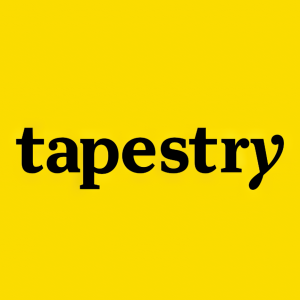The Tapestry Foundation Heads to Brazil for an In-Person Look at Agroforestry
NORTHAMPTON, MA / ACCESSWIRE / May 18, 2023 / Tapestry, Inc.

In April 2023, the Tapestry Foundation visited Mato Grasso do Sul in Brazil to visit sites that are part of a pilot program sponsored by a four-year,
In Central Brazil's vast Cerrado savanna, a grand experiment is taking place. Baru trees by the hundreds are being planted - some in the form of seeds, some as seedlings, and some well on their way to maturity in agroforests alongside other native vegetation. In some tracts, cattle graze among the more mature baru trees, in other areas, no cows are allowed.
The point of all this testing is to uncover the premium growing conditions under which the baru (Dipteryx alata) can thrive. The species, native to the Brazilian Cerrado, is a key part of reforestation efforts in the state of Mato Grosso do Sul. And overseeing a reforestation project on the Boa Vida farm near town of Bonito is a woman who is a "traditional seed guardian," Elida Cristina Martins.
"I found that if we planted baru with bananas nearby it grows much faster than when planted alone, and the bananas help break the wind and keep the ground wet to keep the baru healthy," she said as she gave a recent tour of her farm to a group of visitors from World Wildlife Fund (WWF) and the Tapestry Foundation.
The Tapestry Foundation is entering the second year of a four-year,
Some of the Tapestry Foundation funding goes to WWF-Brazil to fund unique reforestation programs like the one on Boa Vida. Although national legislation requires that landowners must preserve 20 percent to 35 percent of their land and all riparian vegetation as well, the rest of the land can be legally cleared due to the lack of a zero-deforestation law for the Cerrado. Because half of the Cerrado has already been converted to pasture and farmland, it's been under heavy use, and two-thirds of the pastures in the Pantanal headwaters are under moderate to severe degradation. Landscape restoration and pasture rehabilitation are key parts of solving the environmental crisis in Brazil and are therefore among the highest priorities of WWF and the Tapestry Foundation.
"The purpose of our work in Brazil is to try to be part of the solution towards a more sustainable leather supply chain- one that works for the environment and local communities. During our time in Brazil, it was important that we met with local people and communities to better understand the impact climate change is having on the most vulnerable populations," said Julia Furnari, Director of the Tapestry Foundation. "For vulnerable communities like this one, where so many depend on nature to survive, protecting the community and the environment helps to turn sustainable practices into long-term solutions while creating opportunity for so many."
Roughly 36 families live on the Santa Lucia settlement, of which Boa Vida is a part, and Elida Cristina Martins has been farming and raising cattle for more than 25 years on 12 hectares, or nearly 30 acres. Nearly one-third of the land in the settlement is owned by women, she said, creating a unique economic opportunity for a group that often gets overlooked in discussions about the wealth of the land and environment in South America.
"We have an integrated system, where baru is planted with Crotalaria and sorghum to determine which grows better together," she said. The sorghum can be used for cattle feed, and therefore can be revenue-producing.
In the last year alone, she has planted 2,200 trees. "We're always testing what will work better. We experiment with multiple people planting and with a single person - me - planting, to see which grows better," she said. "And we plant mango, cashew, coconut, guava, lime, pineapples --- all alongside the baru to protect it and help it thrive. Every species has a time to fruit and so you also have fruit all year long."
View additional multimedia and more ESG storytelling from Tapestry, Inc. on 3blmedia.com.
Contact Info:
Spokesperson: Tapestry, Inc.
Website: https://www.3blmedia.com/profiles/tapestry-inc
Email: info@3blmedia.com
SOURCE: Tapestry, Inc.
View source version on accesswire.com:
https://www.accesswire.com/755883/The-Tapestry-Foundation-Heads-to-Brazil-for-an-In-Person-Look-at-Agroforestry







